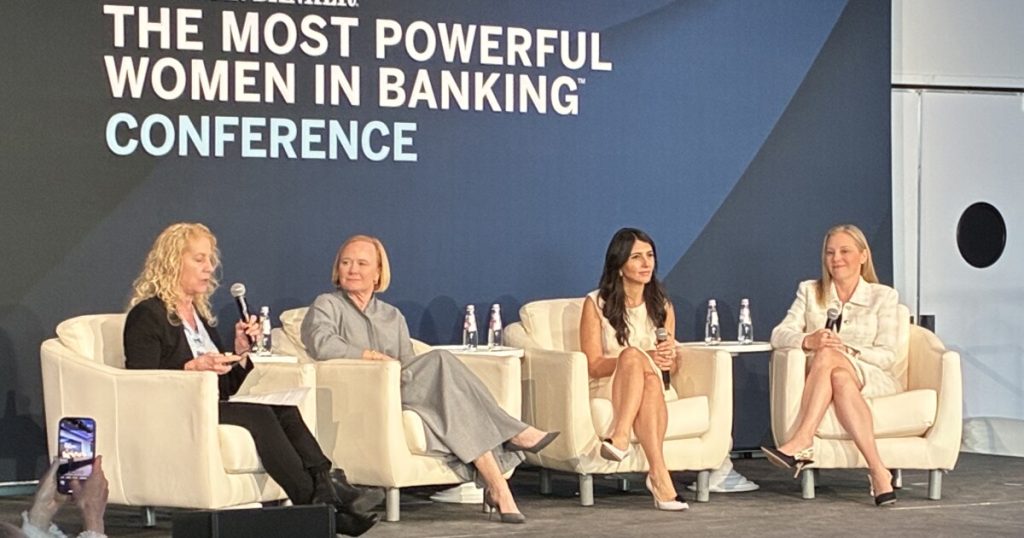- Key insight: Employees of different generations have different communication styles, personal needs and motivations at work.
- What’s at stake: Managing workers of varying ages can be challenging, but understanding them can unlock their different strengths.
- Expert quote: “Great leadership has always been about managing a diverse team,” said Solita Marcelli, UBS’ head of investment management. “What has changed in this landscape … is how to deliver that when now there are more varied styles that you have to connect with.”
In an era when a single office can include baby boom, Generation X, millennial and Generation Z employees, managing members of so many age groups at once can be a challenge. But it can also be the key to a team’s strength.
At this week’s
“This generational gap is not necessarily a problem to solve, but it’s really an opportunity to unlock the best of everyone,” said Solita Marcelli, global head of investment management at UBS Global Wealth Management.
Marcelli was joined on the panel by Hope Dmuchowski, chief financial officer of First Horizon Corp., and Kristin Lesher, chief wholesale banking officer at
“Great leadership has always been about managing a diverse team,” Marcelli said. “What has changed in this landscape … is how to deliver that when now there are more varied styles that you have to connect with, or there’s more varied expectations.”
One example of that variety is in communication styles. One thing Lesher said she’s noticed about her youngest co-workers is their need for “more context around everything.”
“It’s not like, ‘Oh, I would like you to go do X, Y and Z, and somebody just says, ‘OK, yes, I’ll do that,'” she said. “It’s more, ‘All right, help me understand why you’re looking for this. What is this going to do to drive our company forward?'”
In the short run, Lesher said, this curiosity means managers have to spend more time explaining instructions. But in the long run, it’s a benefit to the company.
“I find that to be so great … because you want to be pushed and you want to be teaching,” she said.
Away from the office, different age groups have different family needs. Many millennials, who are now in their 30s and 40s, are juggling the responsibilities of work and childcare. Meanwhile, baby boomers and Gen Xers, who collectively now range from their late 40s to 70s, are often taking care of aging parents and other senior relatives.
“The baby boomers and the generation below that — they’re almost coming back to their 30s,” Dmuchowski said. “I have a lot of employees who say, ‘I’ve got to take a mother or a father to a doctor appointment.’ … And so that phase of life also has an impact on what they need for work-life balance and support.”
Another difference between generations is what motivates them. For example, in Marcelli’s view, the specter of getting fired doesn’t seem to instill dread in today’s youth like it did with previous generations.
“You can no longer lead through fear,” she said. “Especially with the young generation, if they haven’t gone through the dot-com bubble, if they have not gone through the financial crisis, they are not walking on eggshells every day, worried about losing their jobs.”
In the current economy, Marcelli said, there’s less stigma to changing jobs frequently and more opportunity for gig work in between. So for employees who have only ever known that kind of work culture, something besides the fear of termination is required to keep them going.
“In that environment, your retention strategy has to be culture,” Marcelli said. “It has to be purpose.”
All these differences, however, came with a caveat that Lesher spelled out for the audience: These are generalizations, and people are individuals. Plenty of people within each generation are very different, and people of different generations are often very similar.
“One of the things I really think about is not to get sucked into stereotypes or typing people, because, in all honesty, everybody wants the same thing,” Lesher said. “They want to learn, they want to have someone who’s going to mentor and coach them, and they want to do interesting work.”

